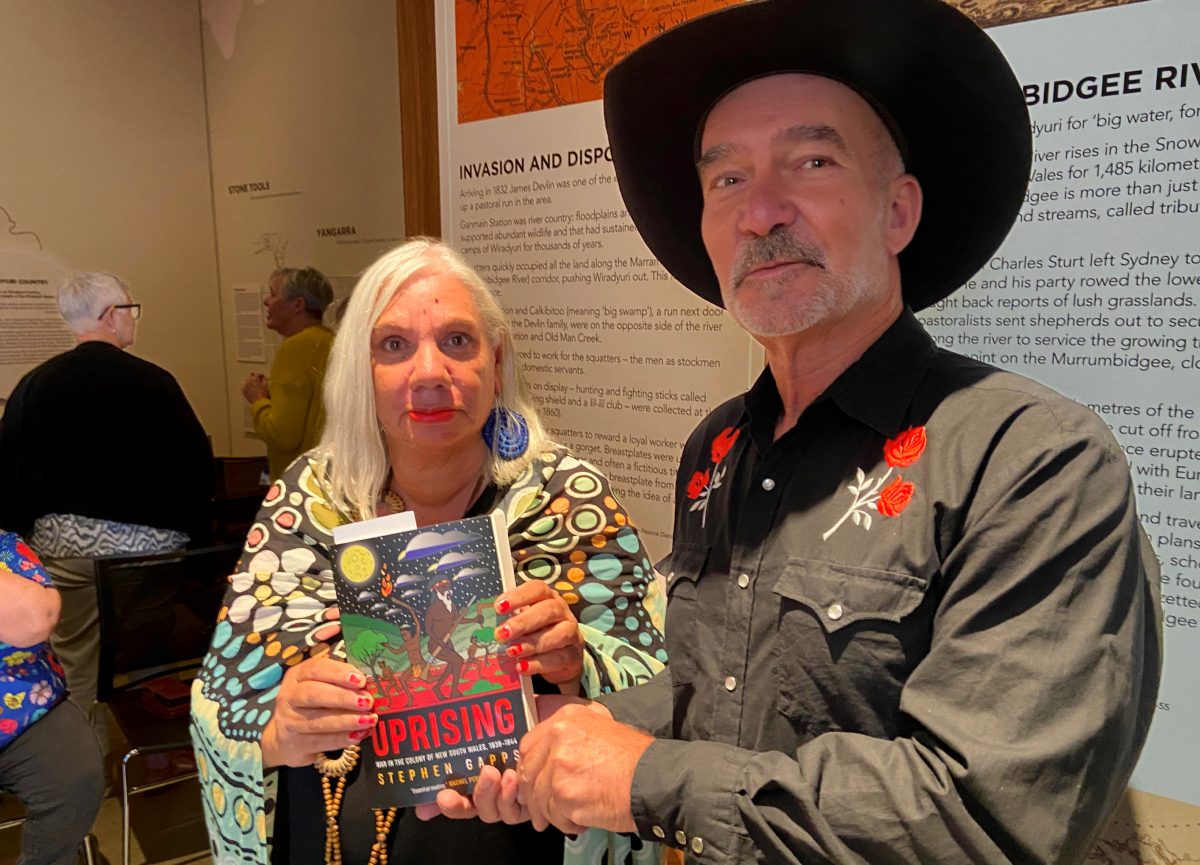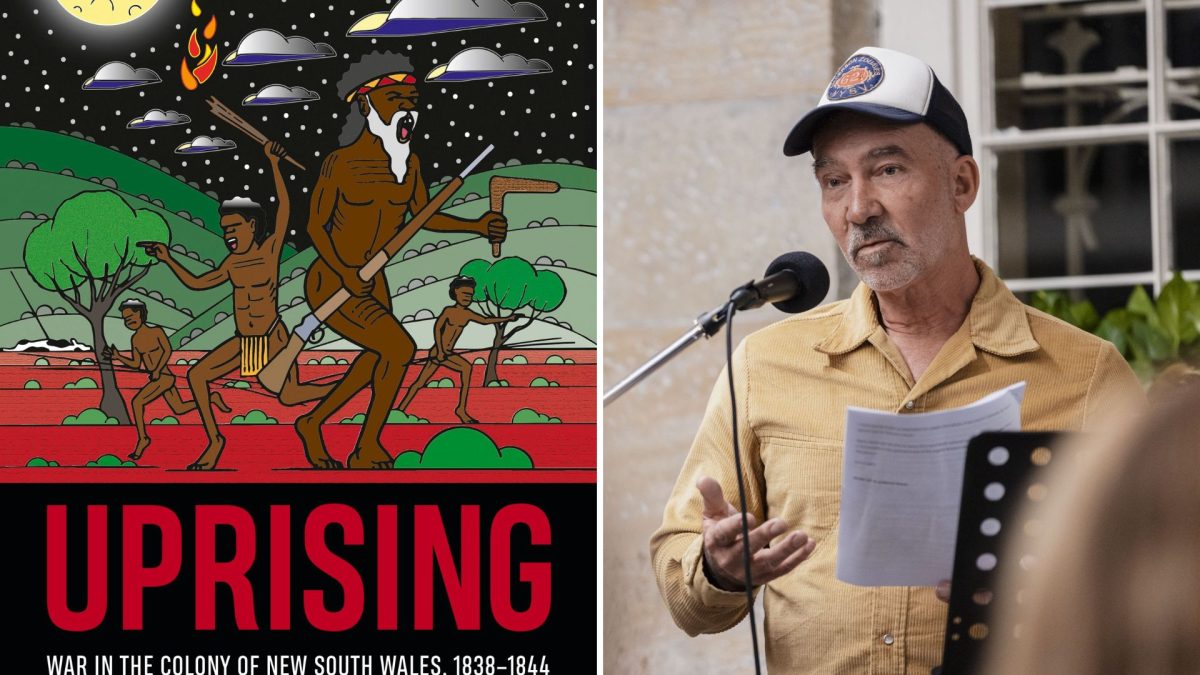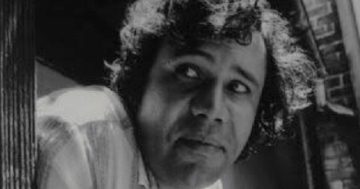
Aunty Cheryl Penrith with Uprising author, Dr Stephen Gapps at the Museum of the Riverina. Photo: Chris Roe.
Historian and author Stephen Gapps wants Australians to properly understand the scope of the conflict upon which our nation was founded.
Rather than a random series of violent encounters between European settlers and First Nations, Dr Gapps said it should be seen through the lens of warfare and coordinated military resistance.
“I’m sick of using the term ‘Frontier Wars,'” he said at the launch of his latest book Uprising at the Museum of the Riverina on Thursday (10 April).
“I hope that it might be renamed the ‘Australian War’ because that’s what it was. The war for the occupation of this country.”
Uprising is Dr Gapps’ third book on colonial conflict and follows on from The Sydney Wars and Gudyarra: The First Wiradyuri War of Resistance.
It tells the story of the Second Wiradjuri War of Resistance between 1838 and 1844 which he said can be interpreted as the defense of the Murray-Darling River Country.
“The First Wiradyuri War of Resistance around Bathurst ended in 1824 with a series of massacres conducted by settlers in the region,” Dr Gapps said.
“From the 1830s, colonists began occupying more and more Aboriginal land across western NSW and stocking it with sheep and cattle.
“By 1838, a dramatic fightback began across the entire frontier of the colony, and what has been called the Second Wiradjuri War of Resistance, from 1839 to 1841, which was part of a vast arc of conflict from present-day northern Victoria through to southeast Queensland.”

Uprising is Dr Stephen Gapps’ third book documenting the wars of resistance during the early years of colonisation. Photo: Supplied.
Drawing from hundreds of colonial sources including newspapers, official records and diaries, Dr Gapps said there is no question that the escalating conflict was understood by many at the time as a concerted and coordinated uprising.
“Historians have tended to see that that pastoral frontier, where the squatters were pushing out, as the frontier, but we’re now coming to see it more like a front line,” he explained.
“In the past we hadn’t done the mapping of these events, but now, when we look at the colonial massacres map, we start to see patterns in the landscape.
“The pattern that I saw here was that this was the defense of river country and what sparks that conflict is the squatters going down the rivers and the warriors are fighting back to contain that.”
Unlike the traditional European battlefields, the Wiradjuri engaged in a campaign of guerrilla warfare that primarily targeted the herds of grazing animals that the white men brought with them.
“Traditional Wiradjuri warfare was based on highly organised and structured systems which meant that they generally resolved combats and disputes with minimal loss of life,” Dr Gapps said.
“It also meant there was a level of organised military coherence, often missed or dismissed by historians, that they could readily adapt to fighting against squatters.
“If there was in one way to halt British occupation of Wiradjuri Country at this point, rushing, herding and killing of hundreds of cattle was certainly a strategy that worked.”
While the warriors enjoyed early success, winning skirmishes and driving the squatters back, the colonists rearmed and returned in force, killing hundreds of Wiradjuri and forcing those that remained into increasingly small areas.
“I think we’re getting the idea that there were these tragedies and massacres, but we also need to keep that side by side with the fact that there was also a strong resistance and sometimes that led to those massacres,” said Dr Gapps.
“It’s really complicated, because it’s terrible and it’s really hard to look at those events, but I think it’s important to not just see it as a case of steamrolling with our firearms and horses across the frontier.
“There were moments of really incredible and widely coordinated resistance.”
Uprising is available online through various online bookstores.
Original Article published by Chris Roe on Region Riverina.









